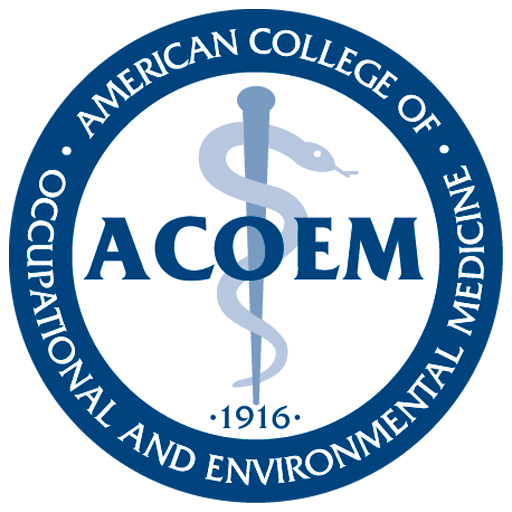03: Medical Surveillance
Medical surveillance is the systematic, ongoing assessment of employees who are or may be exposed to hazards in the workplace. Unlike screening for health outcomes in the general population, medical surveillance is directed toward at-risk workers with known or potential hazards that lead to specific health effects.
The primary goal of medical surveillance is prevention. It is accomplished through interviews, physical examinations and testing to detect whether workplace controls are effectively reducing exposures. A fully effective occupational safety and health program should not result in any positive findings on medical surveillance examinations. Any time a worker is identified as having signs or symptoms consistent with occupational disease, this finding may reflect a gap in protections. Each positive finding should trigger the occupational health and safety team to evaluate the workplace for such gaps. The identification of adverse health effects at an early stage is not only beneficial for identifying gaps in workplace controls, but also highly beneficial for workers. Early identification allows for appropriate intervention, treatment, and referral, and can help halt the progression of disease.
Mandatory and Voluntary Programs
Medical surveillance programs can be mandatory or voluntary. Mandated programs include those codified in the Code of Federal Regulations. The Occupational Safety and Health Administration (OSHA) has mandated surveillance procedures for more than 20 hazards, including asbestos, blood-borne pathogens, lead, and noise. Employers must pay for mandated surveillance programs and conduct them during compensated work hours. Their components vary, but OSHA-mandated surveillance programs rely primarily on symptom interviews and physical examinations. Ancillary tests, such as pulmonary function testing and chest X-rays, may be used. Providers should be familiar with the health effects associated with the hazard under surveillance; otherwise, they may miss key findings and lose an opportunity to intervene for the collective workforce.
Voluntary medical surveillance programs are those without specific governing regulations and may be performed for a number of reasons. OSHA requires that employers provide a workplace free of recognized hazards, so voluntary medical surveillance programs can be used to provide an extra layer of protection for workers or address chemicals that are not otherwise regulated.
Environmental Monitoring
Medical surveillance programs should not stand alone. They are merely parts of a comprehensive occupational safety and health program. Environmental monitoring, particularly air monitoring, is an essential component in determining the likelihood of toxic exposure for the worker. Industrial hygienists should perform hazard assessments at the workplace and determine whether the hazards are significant enough for employees to be enrolled into a medical surveillance program. Workers with frequent, long, or high concentration exposures are at most risk of developing occupational disease. Environmental monitoring data from industrial hygiene surveys can be tremendously beneficial, helping the provider better understand the scope of work and magnitude of exposures encountered in the workplace. However, these surveys are often difficult for medical providers to interpret, and he or she may need to request assistance from industrial hygienists.
Medical Surveillance Components
Medical surveillance examinations may be administered at an industry site, by a physician contracting with an employer, or by an outside medical facility. The components of the medical surveillance program need to be clearly identified before testing begins, and the program managers must take into consideration frequency and types of testing to be performed, referral processes for those identified with medical conditions, occupational disease reporting procedures, and the planned employer response to sentinel health events. The provider responsible for conducting medical surveillance examinations should have a full understanding of the work performed at the facility, the hazards associated with the work, and the health effects associated with these hazards.
Ideally, medical surveillance examinations should be initiated immediately prior to an employee working in a position with potentially hazardous exposure. This allows for a baseline for comparison to future examinations and test results and provides information about an individual’s suitability for performing hazardous tasks. Periodic examinations are used to detect whether employees have health concerns about the work, physiologic changes from exposure, or occupational disease. The frequency of examinations depends on the potential hazard, the nature of the work, or the age of the employee.
At the time of medical surveillance examinations—which often take place over two visits—the provider should have all available test results before making a determination. The initial visit should focus on collecting laboratory work, imaging, and ancillary testing such as electrocardiogram or audiogram. Biological (toxicological) monitoring may be performed during the initial visit (see Chapter 3, Toxicological Monitoring). The follow-up visit is typically reserved for the worker interview and physical examination, and interpretation of the results from both visits. Upon completion of the second visit, the provider should be able to determine whether the worker has evidence of exposure or an occupational disease. If he or she does, or if biological monitoring levels exceed specific limits, the employee’s work practices, procedures, and conditions should be evaluated by the occupational safety and health team. Additional testing, or retesting, may be needed, and if results remain elevated, removal of the employee from the hazard should be considered. Workforce health trends should be monitored over time to determine whether increased signs or symptoms arise in the course of medical surveillance examinations and ancillary testing.
It is important to note that occupational health records must meet the criteria for confidentiality and regulatory compliance of both OSHA and the Health Insurance Portability and Accountability Act (HIPAA). A medical surveillance program may include specific guidelines for long-term recordkeeping. The employer and employee should be informed of the determination made during the medical surveillance examination by the occupational provider, and all abnormal test results provided to the employee.
